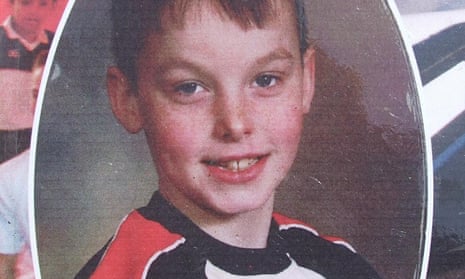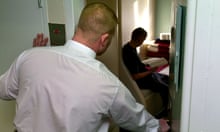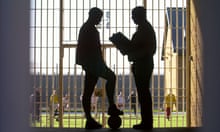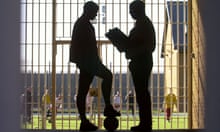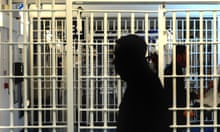Fourteen children who were assaulted by G4S and Serco staff while being detained in secure training centres (STCs) between 2004 and 2008 have received damages following a Guardian investigation.
Neither company has admitted liability, but almost £100,000 has been paid out in compensation to the complainants who are now adults. A third was paid by the Youth Justice Board and G4S and Serco paid the rest.
The Guardian investigation followed a public outcry caused by the deaths in 2004 of Gareth Myatt and Adam Rickwood in the STCs. Myatt, aged 15, died after being unlawfully restrained by three officers in Rainsbrook STC, near Rugby. He had been restrained for refusing to clean a sandwich toaster, which he said he had not used.
Myatt was 1.47m (4ft 10in) and weighed 41.3kg (6st 7lb). One restraining officer was 1.85m (6ft 1in) and 101.6kg (16st). When he told the restraining officers he couldn’t breathe one replied: “Well, if you are shouting, you can breathe.”
Rickwood, 14, killed himself after being unlawfully restrained by four adult carers at Hassockfield STC, where he had been on remand for just over a month on wounding charges. Officers unlawfully restrained him using a “nose-distraction” technique (severe tweaking) after he refused to go to his room.
The families of Myatt and Rickwood discovered that in all four STCs in England and Wales staff were routinely using force to discipline children. That is against the terms of their contracts with government, which stated that force can only be used as a last resort, to prevent injury or damage.
Four years ago, the Guardian received irrefutable evidence that children continued to be restrained for non-compliance in STCs and young offender institutions long after the deaths of Myatt and Rickwood. The Guardian contacted lawyers Bhatt Murphy, who began to seek legal redress for the children concerned.
By 2012, the Guardian had traced the whereabouts of 20 children whom we believed had been unlawfully restrained in STCs, 16 boys and four girls. STCS have been criticised for their expense (£178,000 a year per head), their aggressive culture and the high recidivism rate of the children detained in them.
Of the boys the Guardian traced, 15 were back in prison and one in Pakistan, where he had been sent by his parents to stop him getting in trouble with the law again. Two of the girls were dead. One, Cara Burke, was murdered and mutilated by a drug dealer in Brazil in 2009. She was 17. The other, Shanice Paris Goff, died at the age of 18 in April 2012 as a result of a fall from the 17th floor of a flat in Woolwich. An inquest into her death is forthcoming.
The Youth Justice Board (YJB) is responsible for protecting children in custody, but it gave conflicting and contradictory guidance on when force was appropriate. In 2008, it even tried to rush through an amendment to the STC rules which made the use of force for good order and discipline lawful.
In 2012, The charity Children’s Rights Alliance England (CRAE) launched a high court action to force the YJB to disclose the names of children who had been unlawfully restrained, for non-compliance in STCs. The case came before Mr Justice Foskett. He eventually ruled against CRAE, but his judgement contained scathing criticism of the unlawful use of restraint in STCs. “During a prolonged period, restraint techniques were used in these STCs for unlawful purposes … There is no escaping the conclusion that the monitoring of STCs by the YJB appointed monitors failed to identify and/or act in relation to the unlawful use of restraint.”
One of the 14 claimants represented by Bhatt Murphy said: “I was there to help me obey the law, but instead the STC staff themselves acted unlawfully by physically abusing me again and again.”
In its letter of apology the YJB said: “We regret that in secure training centres until 2008 force was used in circumstances which we and the STC providers now know were unlawful. The YJB would like to say sorry to any young person who was subjected to unlawful restraint in these circumstances.”
Despite the YJB’s insistence that unlawful restraint stopped in 2008, last year the Guardian reported that five teenage inmates at Hindley young offender institution, Wigan, suffered broken limbs while being restrained in 2012. One inmate had his wrists broken twice, while being restrained by the same prison officer. In all bar one case, the restraint was used for non-compliance.
Last year, Rainsbrook became the first STC to start using a new system of restraint called minimising and managing physical restraint (MMPR). All penal institutions holding children are expected to operate MMPR by 2015. The manual depicting the system’s techniques has 182 redactions. Only government officials, custody officers, and a select group of experts know what ministers have authorised.
Earlier this year, children’s rights campaigner Carolyne Willow made a freedom of information request to the Ministry of Justice (MoJ) to see the unredacted version of the manual. The request was refused on the grounds that inmates may study the manual and develop countermeasures to restraint.
Last month, Willow went to the high court to ask that the MoJ be made to disclose the manual without redactions. Judgment was reserved until the end of October.
In July this year, Hassockfield STC, where Adam Rickwood died, was inspected by the Prisons Inspectorate. A questionnaire at the end of the report revealed that 50% of the detainees reported being restrained at the centre.
